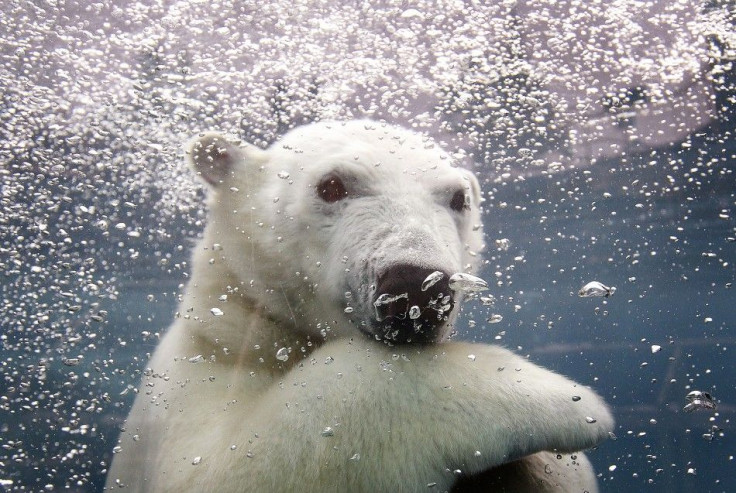Female Polar Bear Sets Longest Swim Record, but How Fatal is This?

Blame climate change for the plight of polar bears. Shrinking sea ice due to global warming could be the cause forcing Polar bears to swim to distant lands looking for favorable denning areas, according to biologists.
As a female polar bear set longest swimming record for having swam continuously for nine days in the Arctic Ocean, north off Alaska, environmentalists raised concern over the deadly impact it brings.
Though polar bears are excellent swimmers, unusually longer swims can drain them out of energy leading to drowning and death.
According to a new study led by the U.S. Geological Survey, mother bears that are forced to swim greater distances put not only their cubs’ lives in danger, but also threaten their own health.
The record-breaking bear swam about 687 kilometers in the Beaufort Sea, where sea ice is melting, but her cub died in between, the researchers said, adding that they observed a loss of 22 percent of body weight in the mother bear after she reached the land, National Geographic News reported.
Such a long stretch of water in Arctic is itself a puzzling event that seldom occurred in the evolution history, and could be an alarming situation for polar bears, scientists proclaimed.
Long-distance swimming of many female bears has been reported since 2004. In some cases they swam as long as 12 days and longer than that, but with halts during their journey unlike the latest mother bear that swam non-stop for nine days, the researchers said.
According to Alaska Science Center, the summer sea ice cover has declined by over half a million square miles over time. Polar bears are dependent on sea ice throughout their life cycle for food, and a depleting ice cover and longer ice-free seasons because of climate change can “directly affect the carrying capacity of the Arctic for polar bears.”
A study done between 1985 and 2005 by the Alaska Science Center revealed that “denning distribution changed in response to reductions in stable old ice, increases in unconsolidated ice, and lengthening of the melt season.”
© Copyright IBTimes 2025. All rights reserved.





















